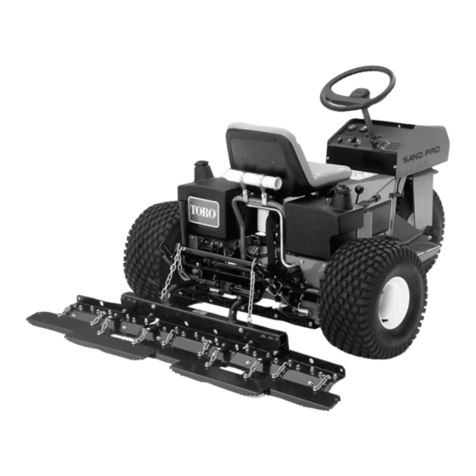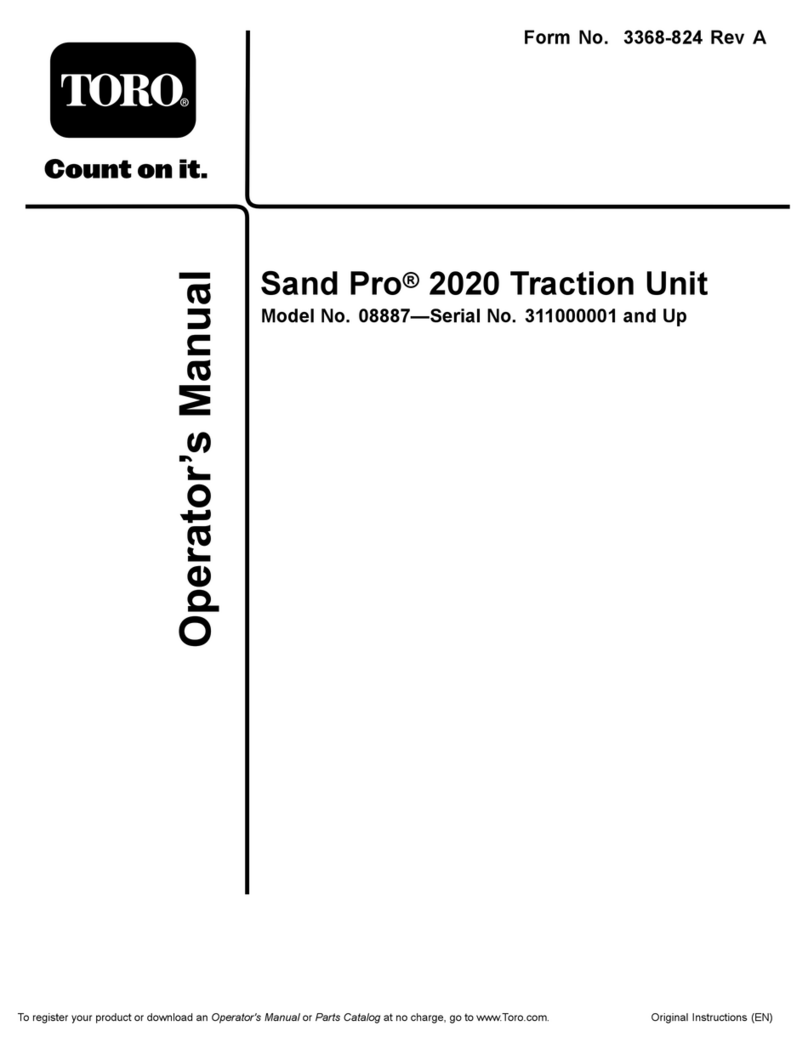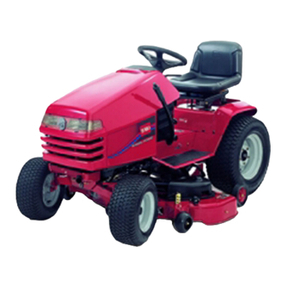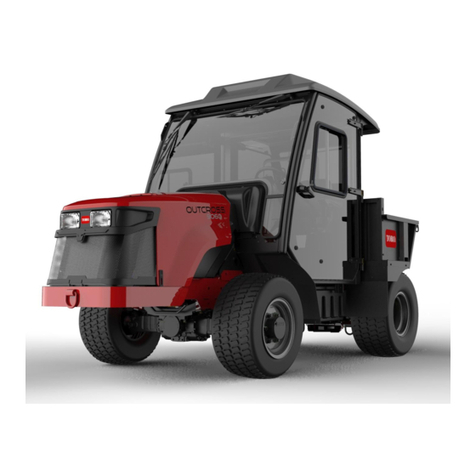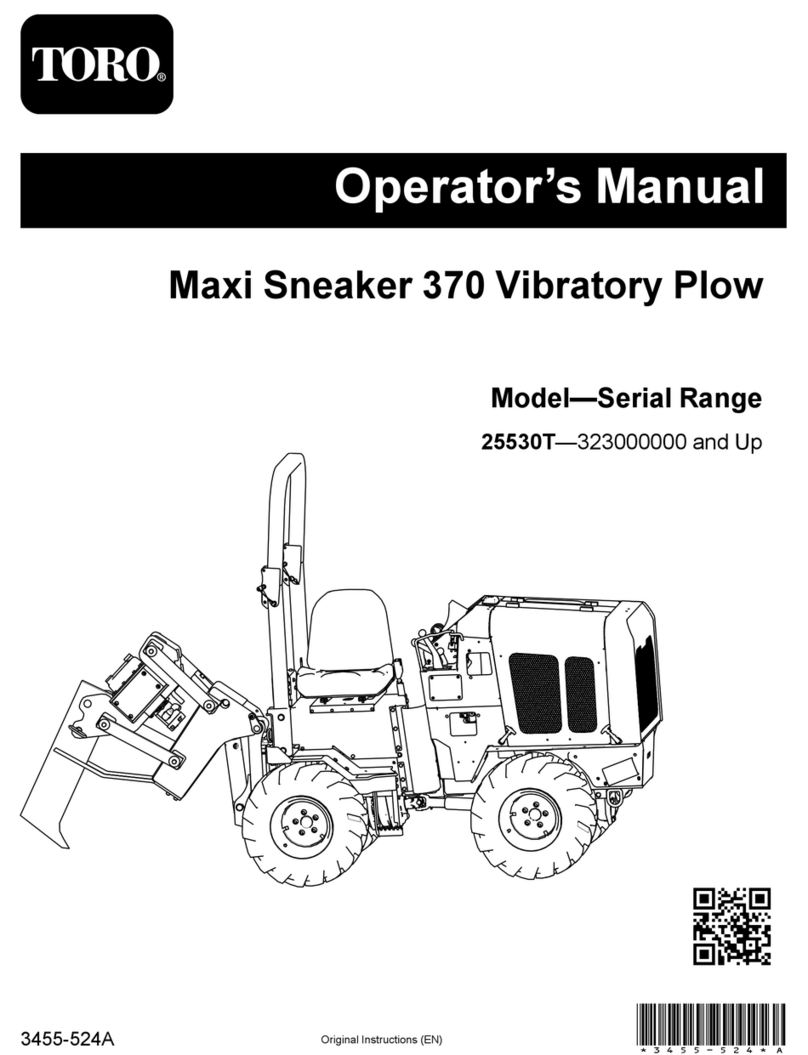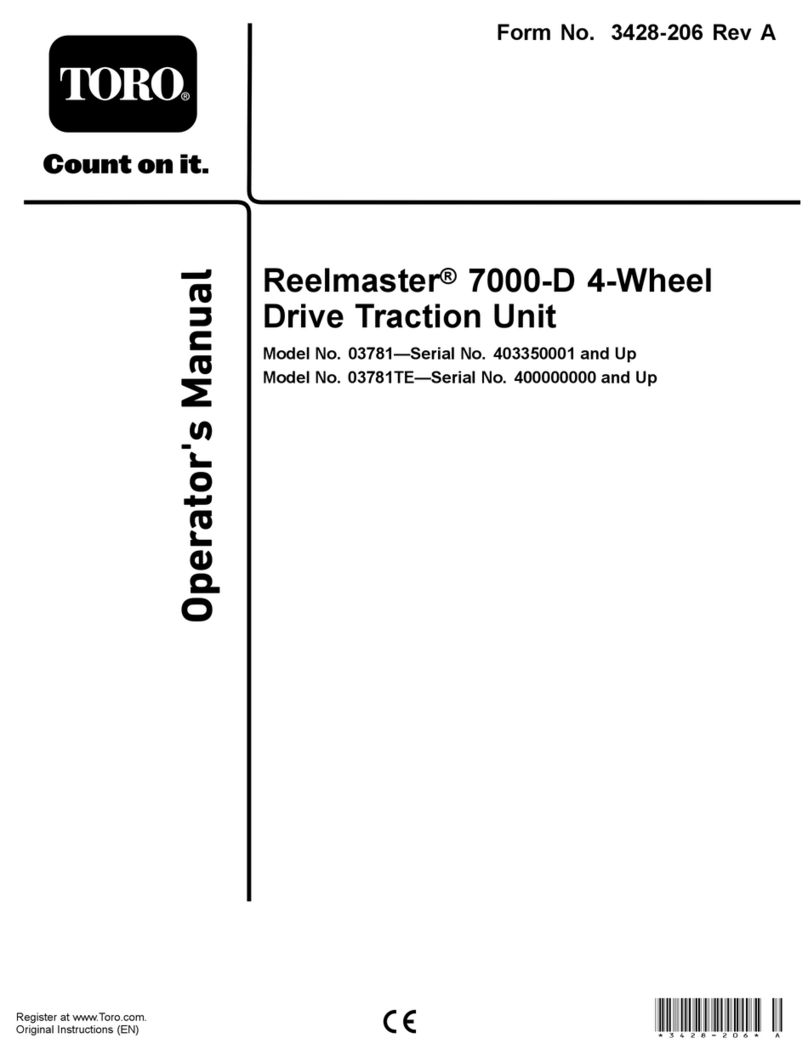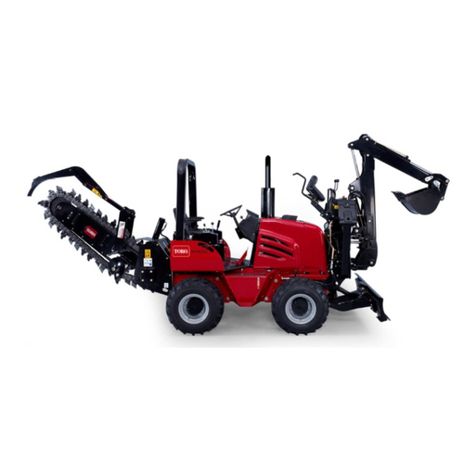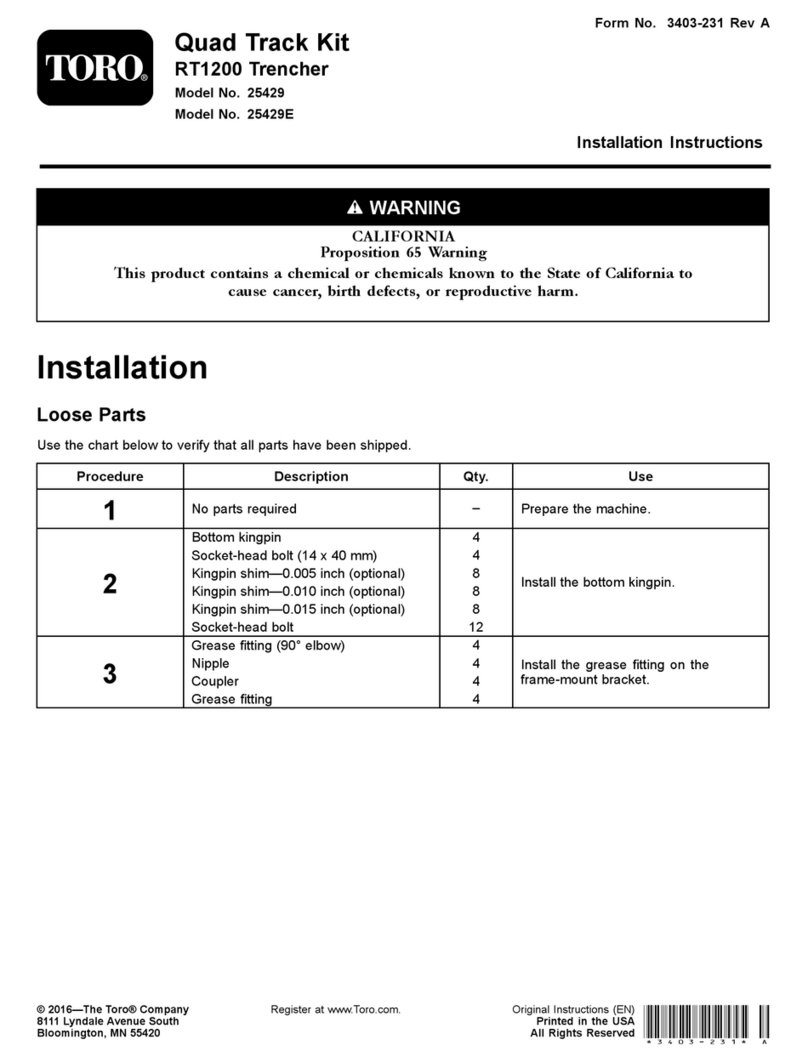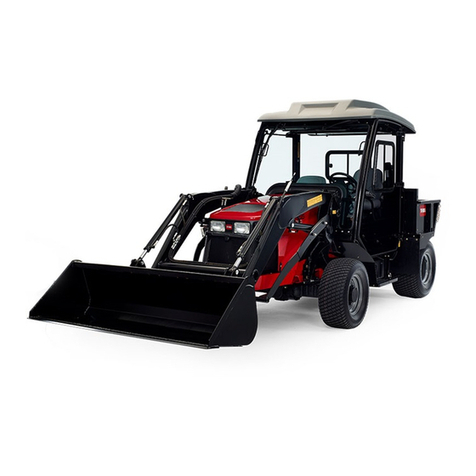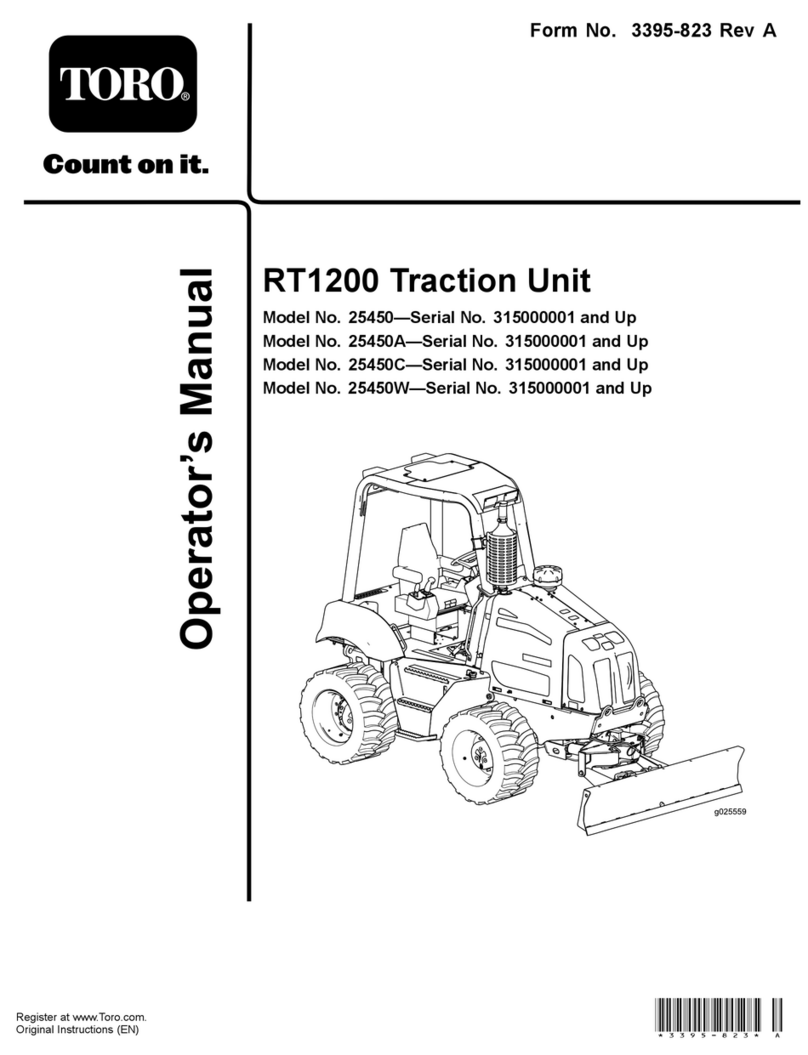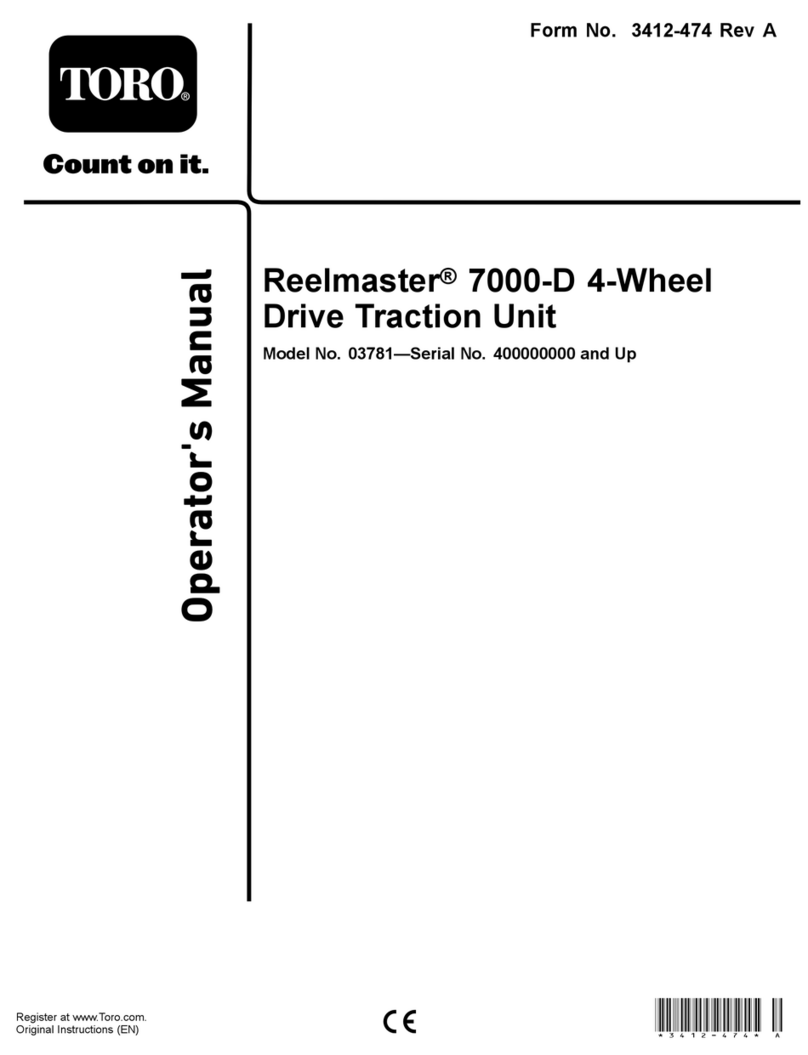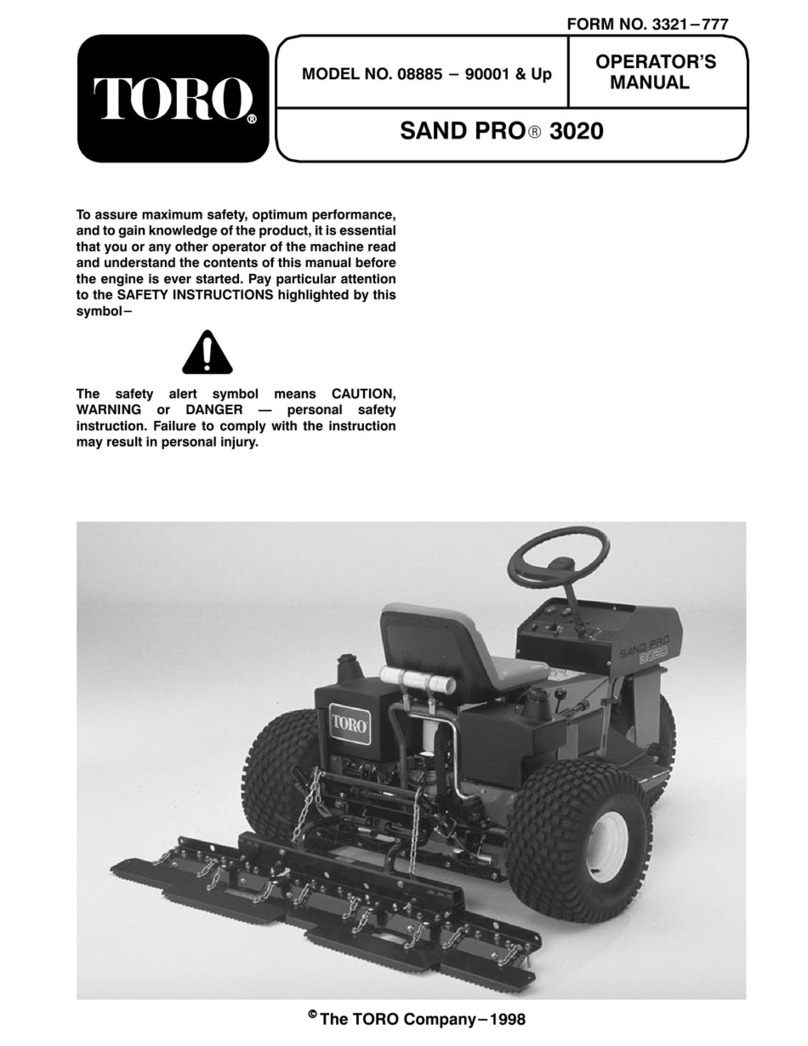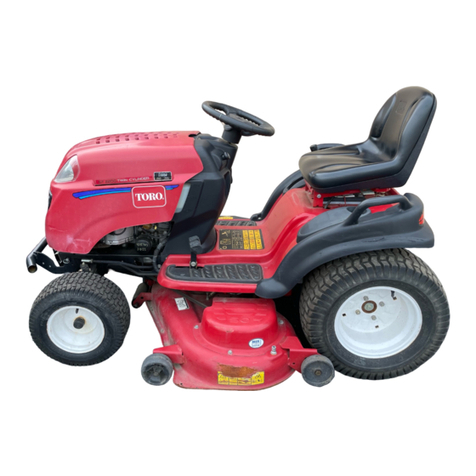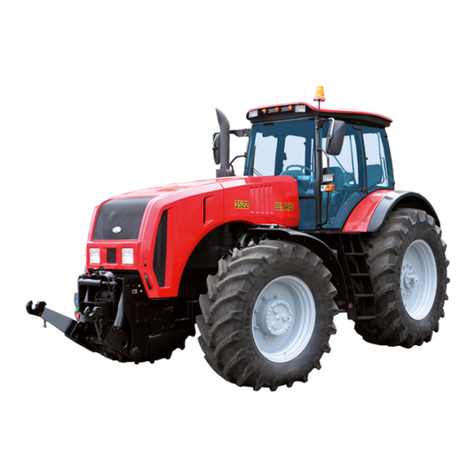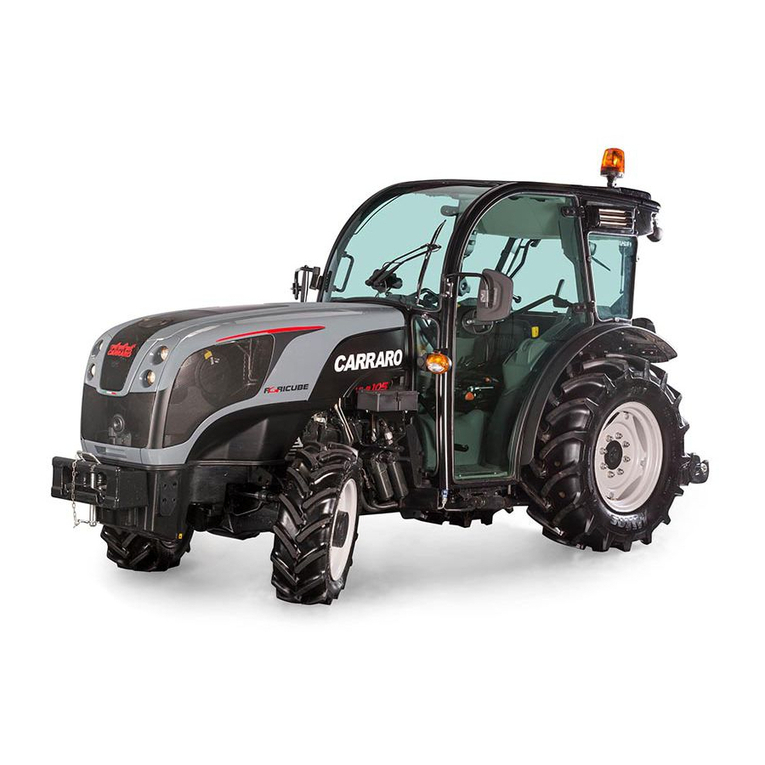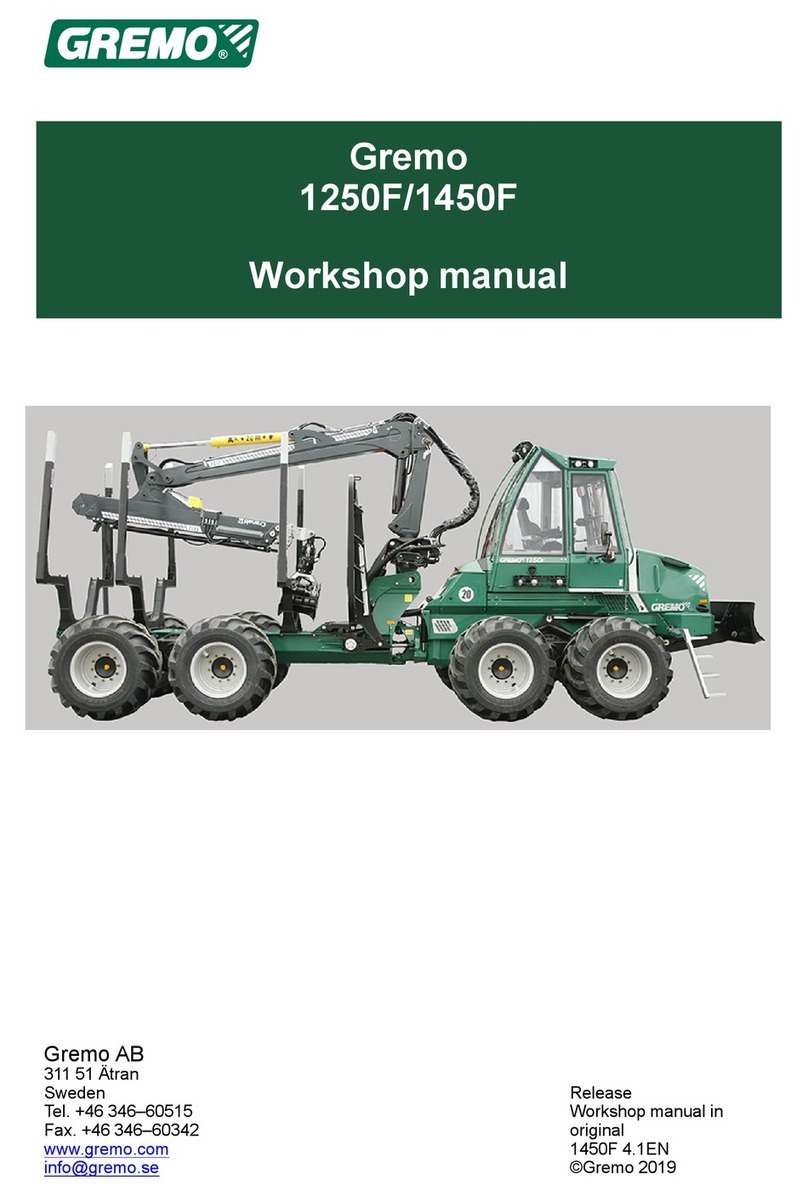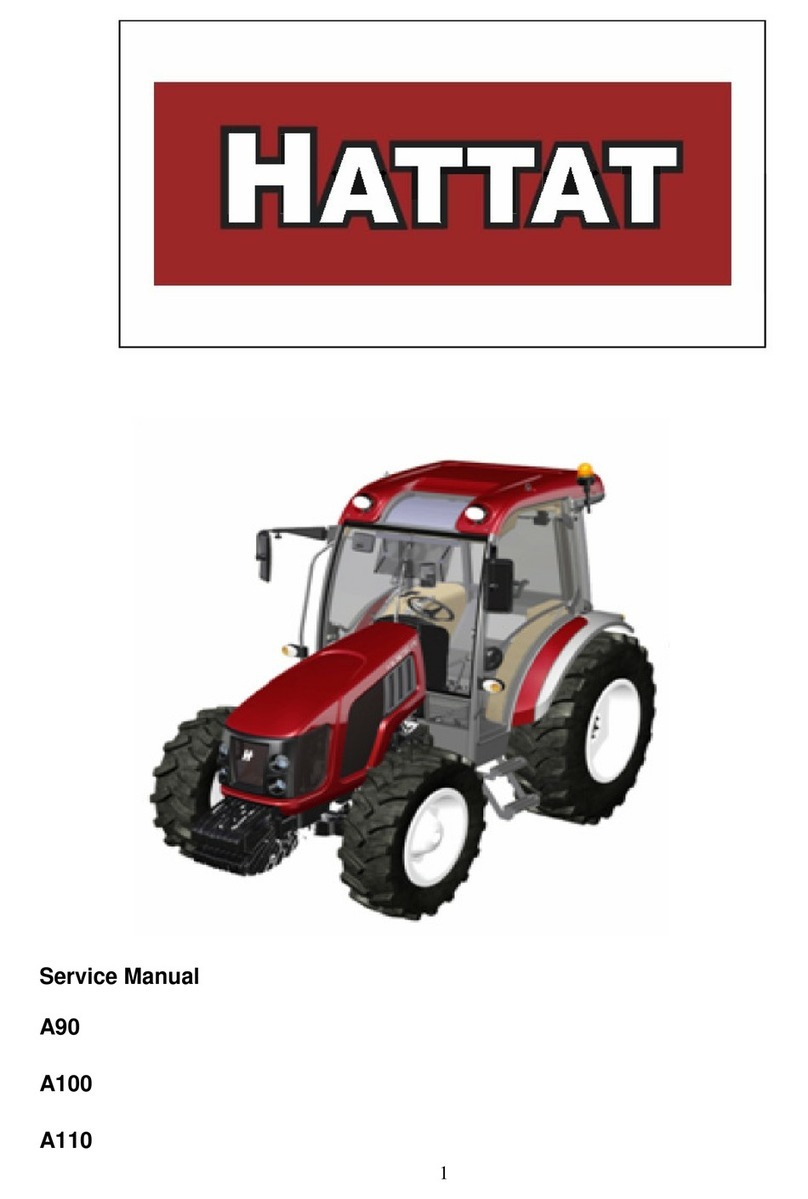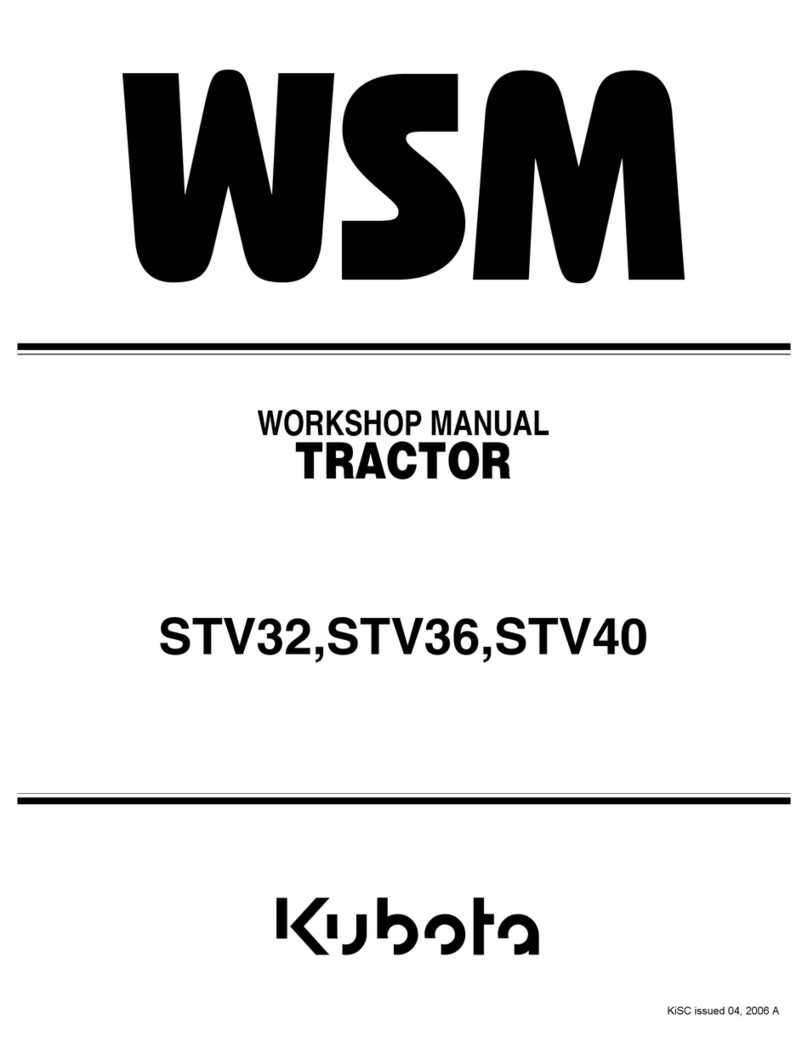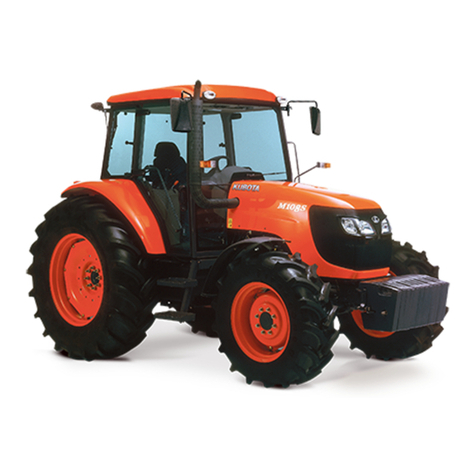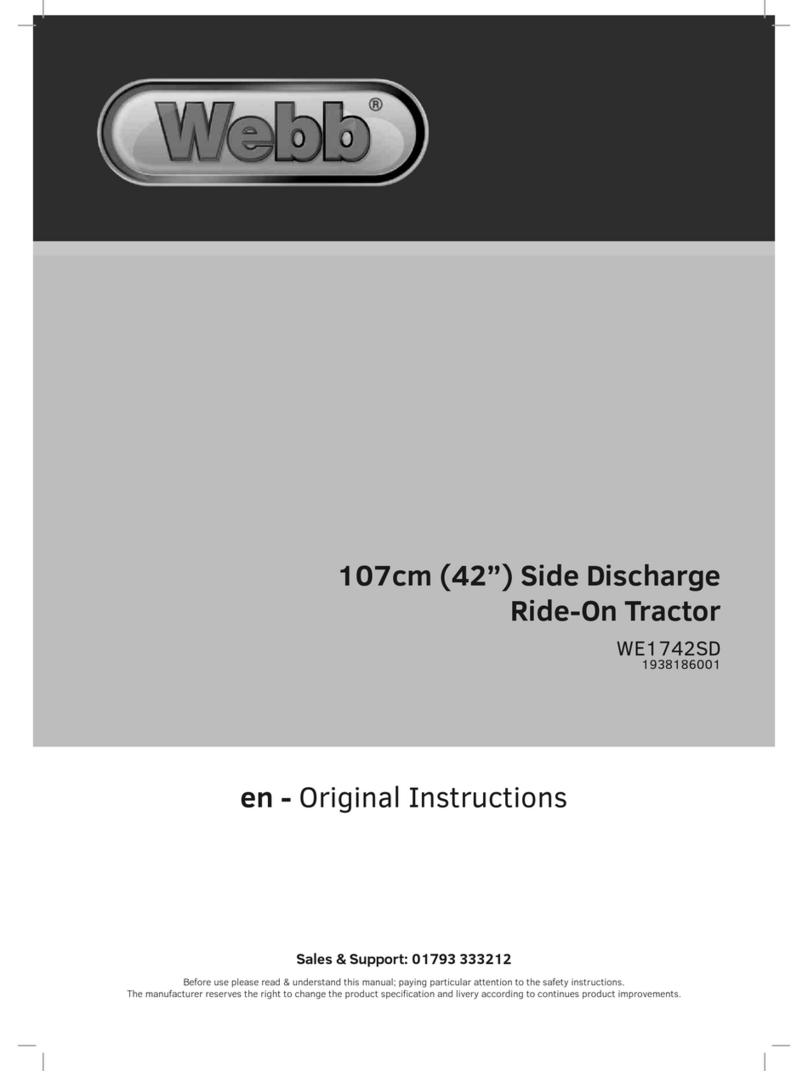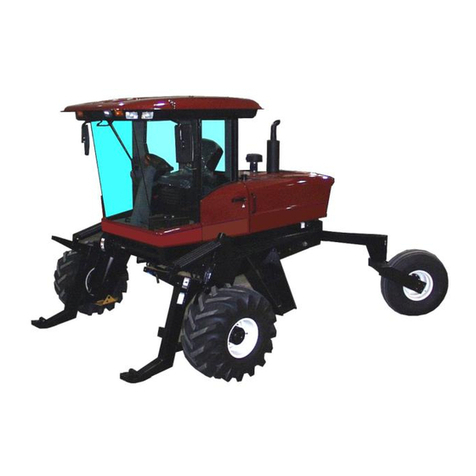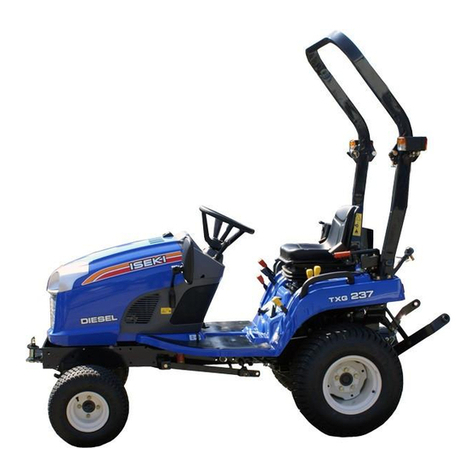
4
•When starting the engine:
– Make sure that the traction pedal is released.
– After the engine is started, keep your foot off of the
traction pedal. The machine must not move. If
movement is evident, the neutral return bracket is
adjusted incorrectly; therefore, shut the engine off
and adjust the bracket so that the machine does not
move when in the neutral position. If the engine
does not start, check the interlock switch for proper
adjustment.
•Using the machine demands attention. To prevent
tipping or loss of control:
– Use care when entering and leaving sand traps. Use
extreme caution around ditches, creeks, or other
hazards.
– Watch for holes or other hidden hazards.
– Use caution when operating the machine on a steep
slope. Reduce your speed when making sharp turns
or when turning on hillsides.
– Avoid sudden stops and starts. Do not go from
reverse to full forward without first coming to a
complete stop.
– Before backing up, look to the rear and ensure that
no one is behind the machine.
– Watch out for traffic when near of crossing roads.
Always yield the right of way.
•If the optional Draw Bar, Part No. 92-2330, is installed
on the machine, the vertical load on the hitch should not
exceed 200 lb. (91 kg).
•Do not touch the engine, muffler, or exhaust pipe while
the engine is running or soon after it has stopped
because these areas are hot enough to cause burns.
•If the machine ever vibrates abnormally, stop
immediately, turn the engine off, wait for all motion to
stop, and inspect for damage. Repair all damage before
commencing operation.
•Before getting off of the seat:
– Engage the parking brake and lower the attachment.
Take precautions to prevent accidental starts, rolling
away, etc.
– Shut the engine off and wait for all movement to
stop.
•Whenever the machine is left unattended, be sure that
the engine is stopped, the parking brake is engaged, the
implement is lowered, and the key is removed from the
ignition.
Maintenance
•Before servicing or making adjustments to the machine,
stop the engine and pull the spark plug wire off of the
spark plug to prevent accidental starting of the engine.
•Make sure that all hydraulic line connectors are tight,
and all hydraulic hoses and lines are in good condition
before applying pressure to the system.
•Keep your body and hands away from pin hole leaks or
nozzles that eject hydraulic fluid under high pressure.
Use paper or cardboard, not your hands, to search for
leaks. Hydraulic fluid escaping under pressure can have
sufficient force to penetrate skin and do serious damage.
If fluid is injected into the skin it must be surgically
removed within a few hours by a doctor familiar with
this form of injury or gangrene may result.
•Before disconnecting or performing any work on the
hydraulic system, all pressure in the system must be
relieved by stopping the engine, engaging the parking
brake, and lowering the attachments to the ground.
•To make sure that the entire machine is in good
condition, keep all nuts, bolts, and screws properly
tightened.
•If major repairs are ever needed or assistance is
required, contact an Authorized Toro Distributor.
•To reduce potential fire hazard, keep the engine area
free of excessive grease, grass, leaves, and
accumulation of dirt.
•If the engine must be running to perform a maintenance
adjustment, keep hands, feet, clothing, and any parts of
the body away from the engine and any moving parts.
Keep everyone away.
•Do not overspeed engine by changing governor settings.
Maximum engine speed is 3200 RPM. To ensure safety
and accuracy, have an Authorized Toro Distributor
check the maximum engine speed with a tachometer.
•The engine must be shut off before checking the oil or
adding oil to the crankcase.
•To be sure of optimum performance and safety, always
purchase genuine Toro replacement parts and
accessories. Replacement parts and accessories made by
other manufacturers could be dangerous. Such use
could void the product warranty.
Sound Pressure Level
This unit has an equivalent continuous A-weighted sound
pressure at the operator ear of: 84 dB(A), based on
measurements of identical machines per Directive
98/37/EC and amendments.



